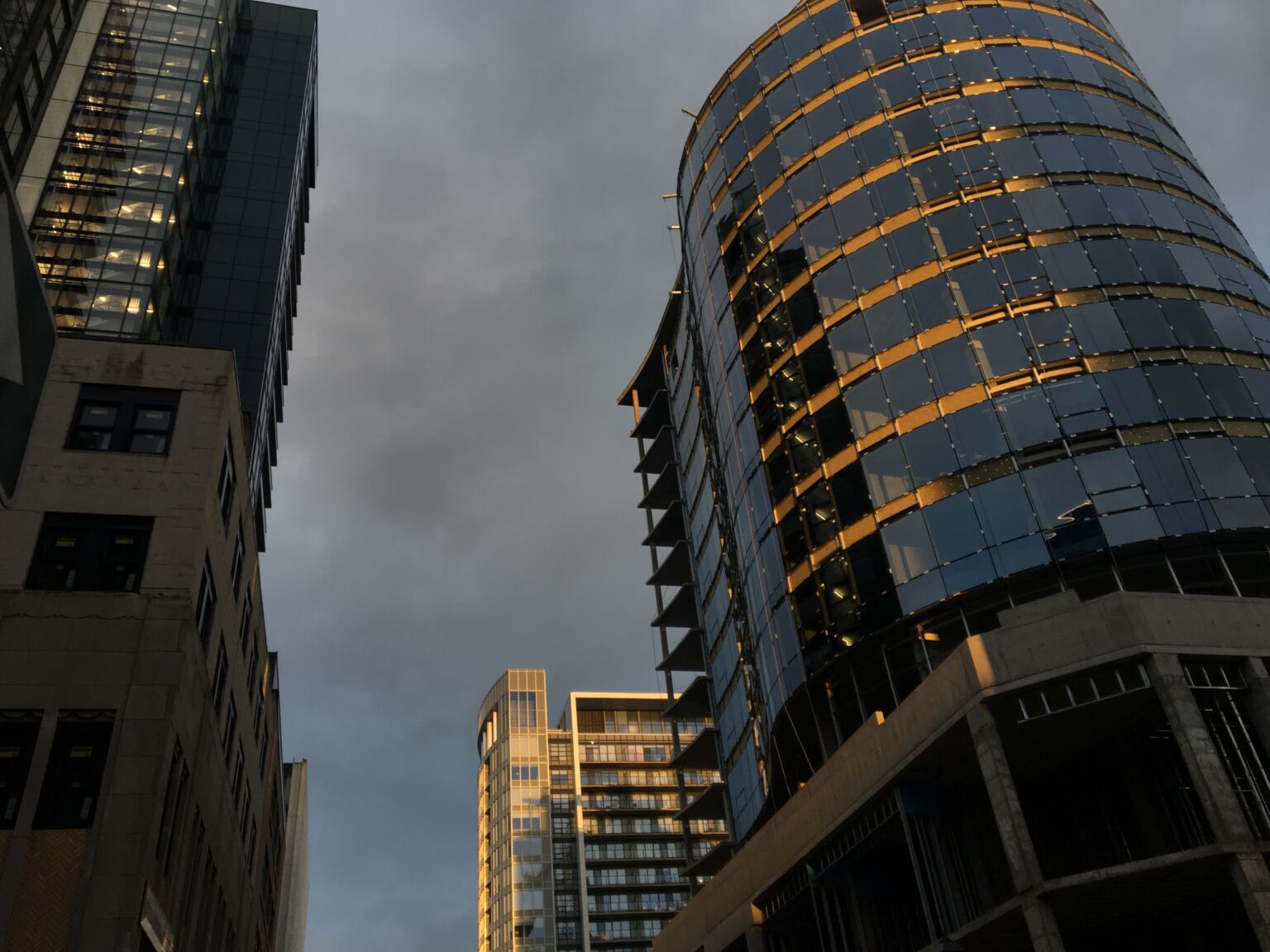Here’s a group of images taken in 1976-77 of the upper stories of buildings in the business blocks of Barrington Street. It was a confusing, liminal period when the street was changing; we could still remember when it was a vibrant commercial district, but the future was unclear.
Yet if you looked above the tawdry, modernized shop fronts, the pride and enterprise that had transformed Barrington Street around the beginning of the last century was still intact, although faded. Looking up was like travelling back in time.
The 1888 Church of England Institute is the oldest building in this little collection. Its turret would have a future starring role in the famous Turret Club.

Photo 1977
Brick was the favoured material in this district that required fireproof construction. The City Club demonstrates how lively bricks can be.

City Club 1891. Photo 1977
I’m fond of this little building opposite St. Paul’s. Rejoice in those undulating bands of brick that that are both window caps and dividing lines.
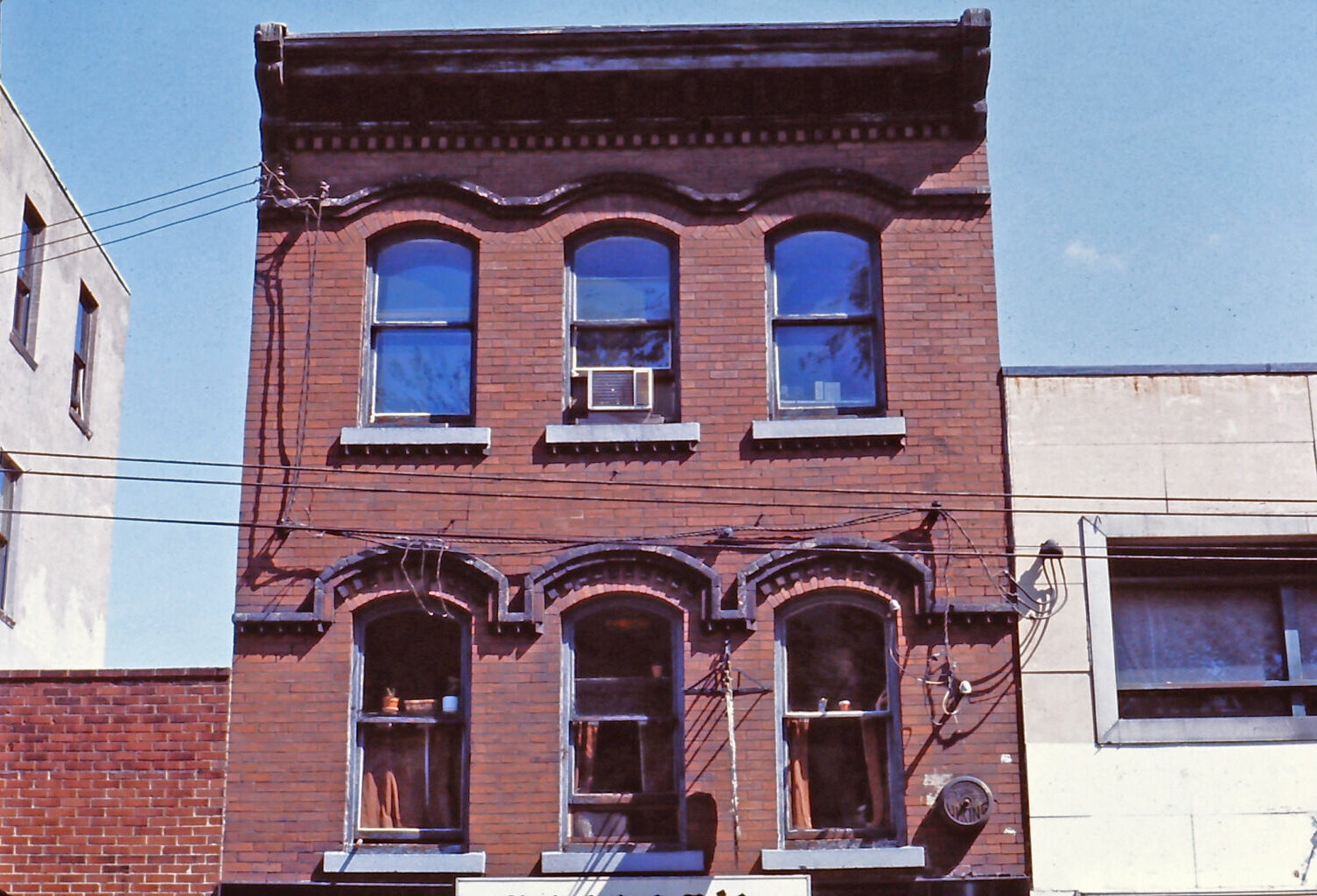
Photo 1977
Arches, and arcades of window are themes on several of these buildings constructed in the late 1890s. The contrast in scale of arches and arcade make the Nova Scotia Furnishing Building appear to soar.
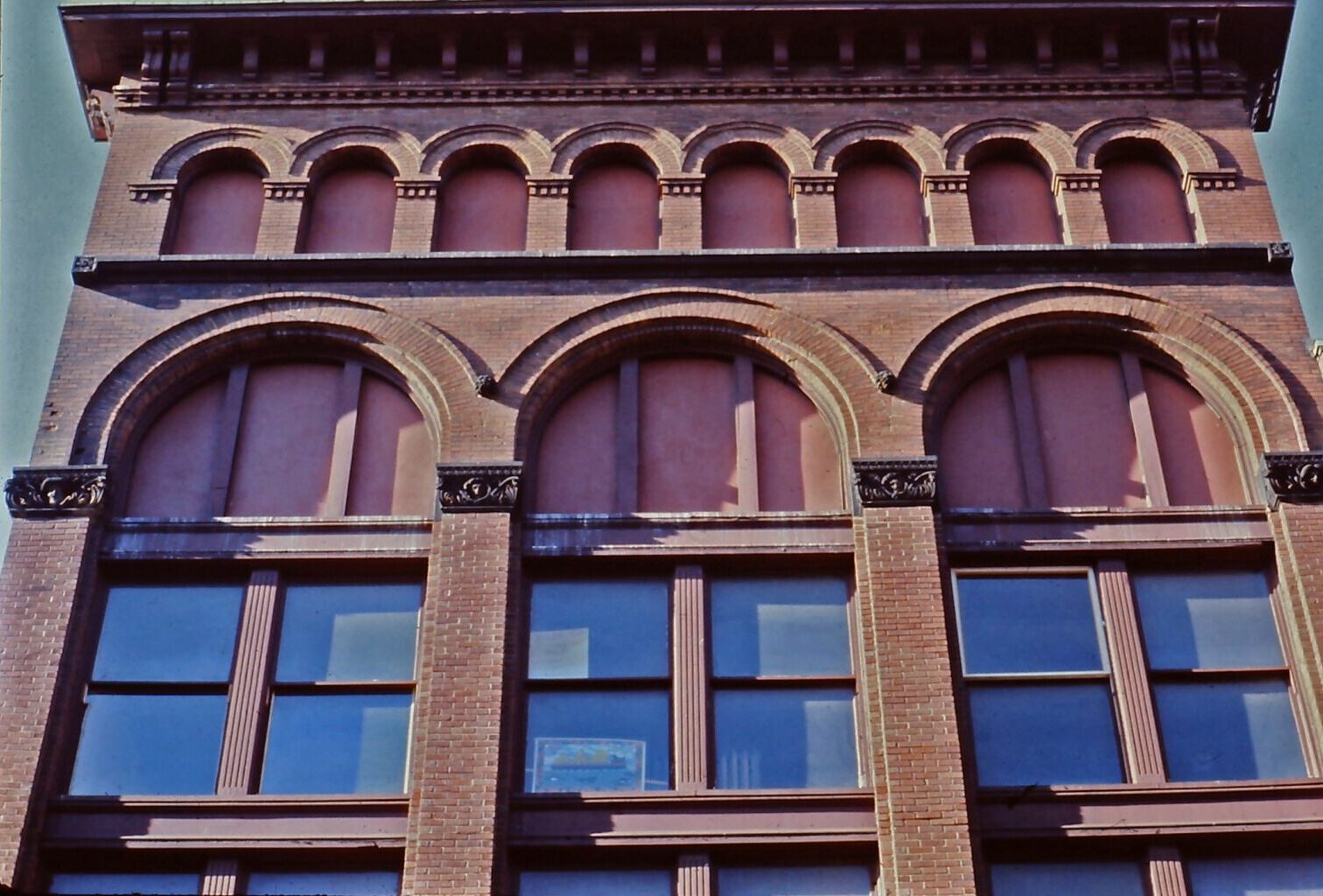
Nova Scotia Furnishing Building 1895. Photo 1977
More arches on the Wright/Marble Building next door. White and coloured brick are combined with smooth cut stone from Marble Mountain in Cape Breton. The header photo is a close-up of this building. Get lost in the detail.
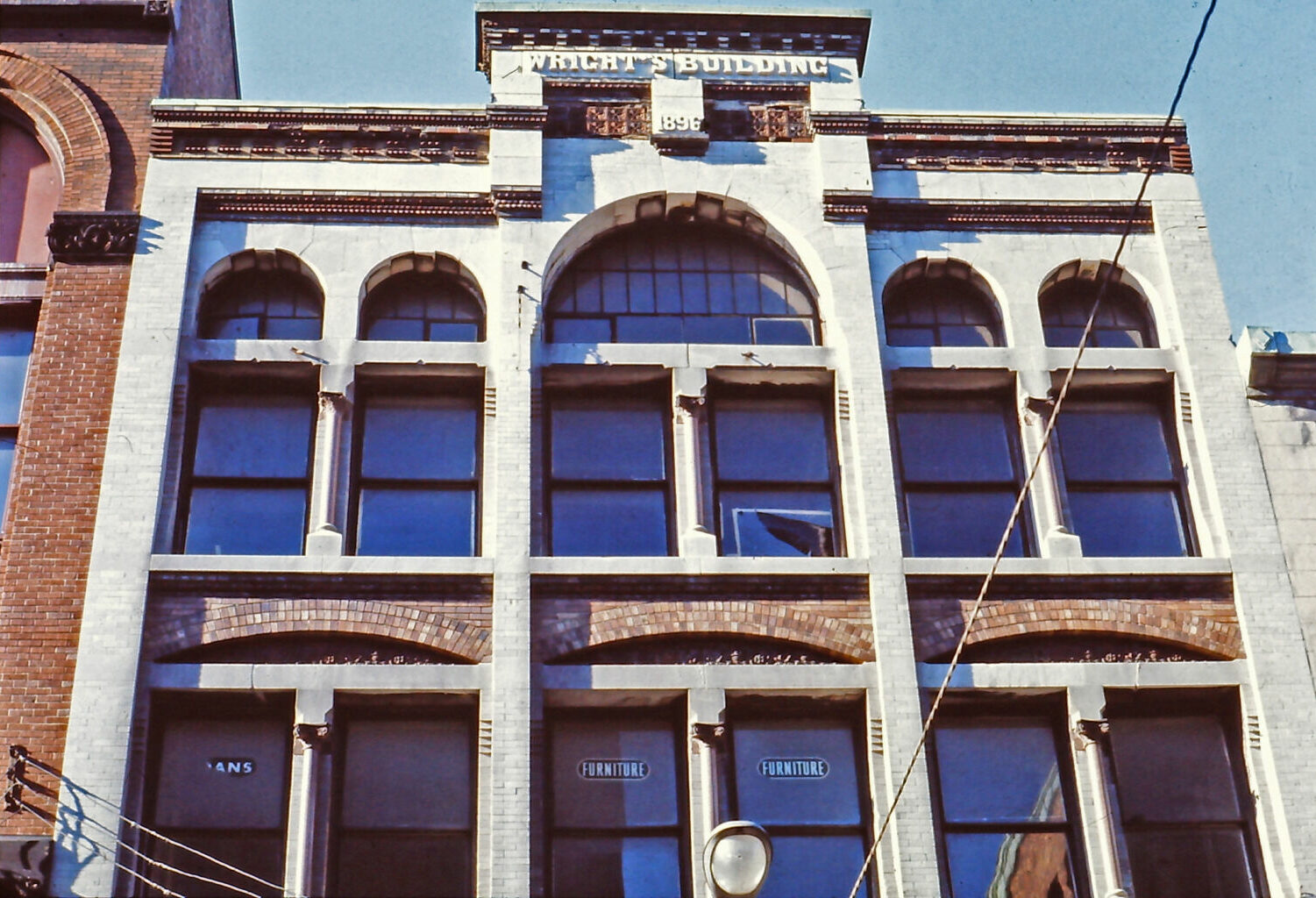
Wright / Marble Building 1896. Photo 1977
Perhaps the grandest façade on the street is the Keith/Green Lantern Building, encompassing three business bays at street level. The units of terracotta decoration are unusual in Halifax.
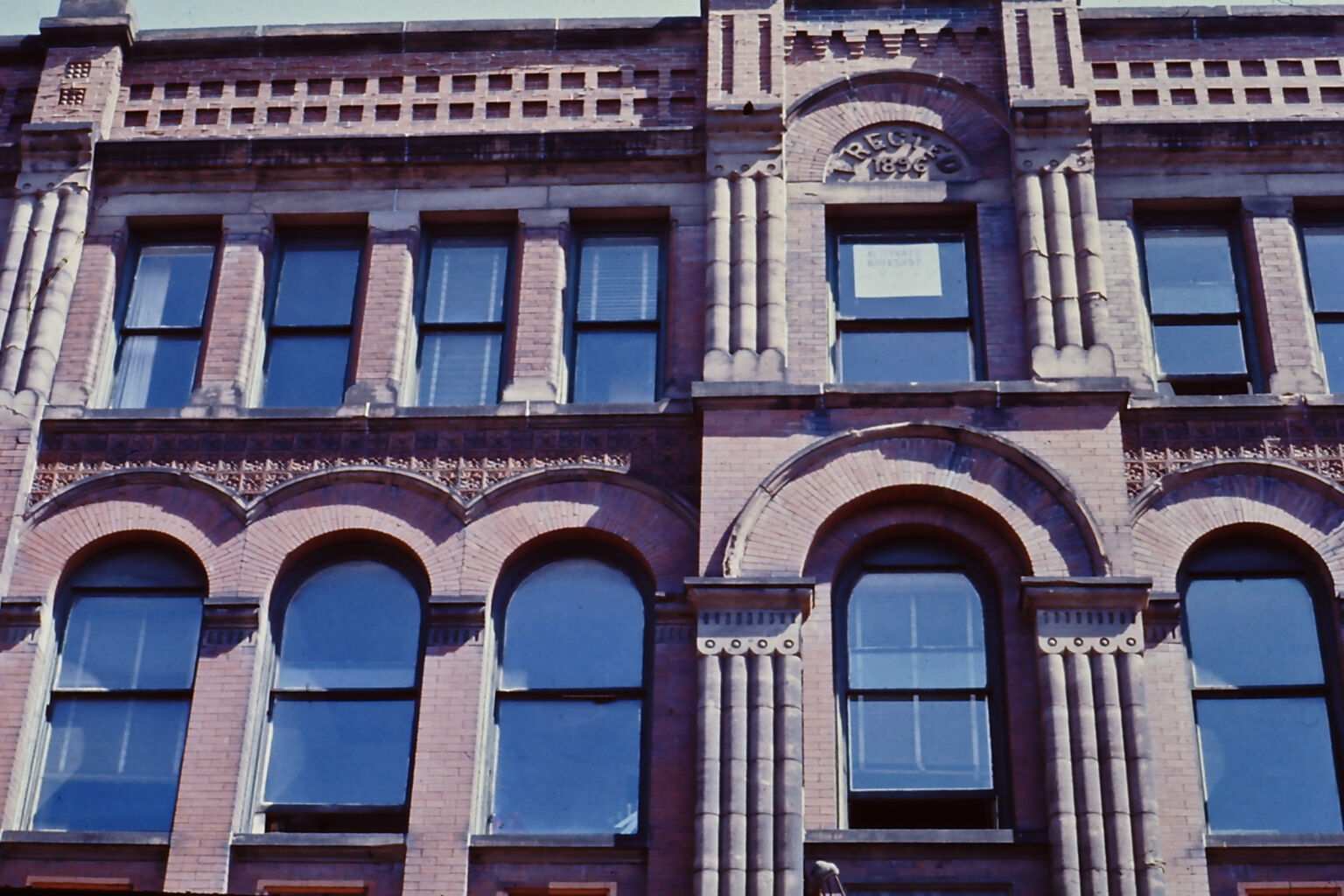
Keith / Green Lantern Building 1896. Photo 1977
Here you get a hint of the new shop fronts that had been tacked onto all the older buildings. Now I would find them worthy of notice, but in the 1970s I was focused on editing them out of my view.

Photo 1976
More coloured brick on the St. Paul Building at the corner of Prince Street. Revisiting these images I marvel at the confidence of the designers as they seem to draw on an endless vocabulary of window shapes and treatments.
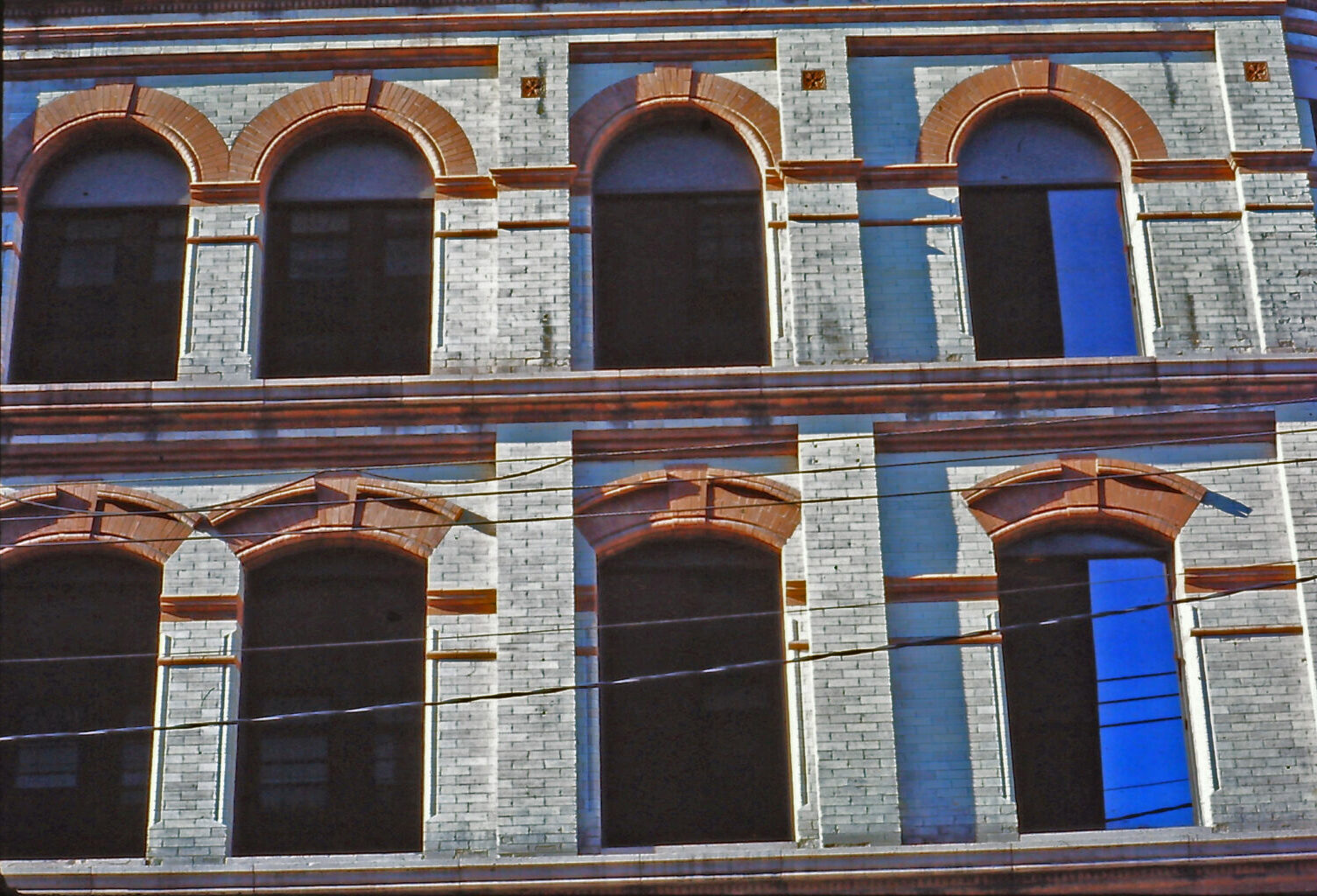
St. Paul’s Building 1897. Photo 1977
Opposite the Grand Parade is a trio of buildings clad in rugged stone, another stylish look in the 1890s.
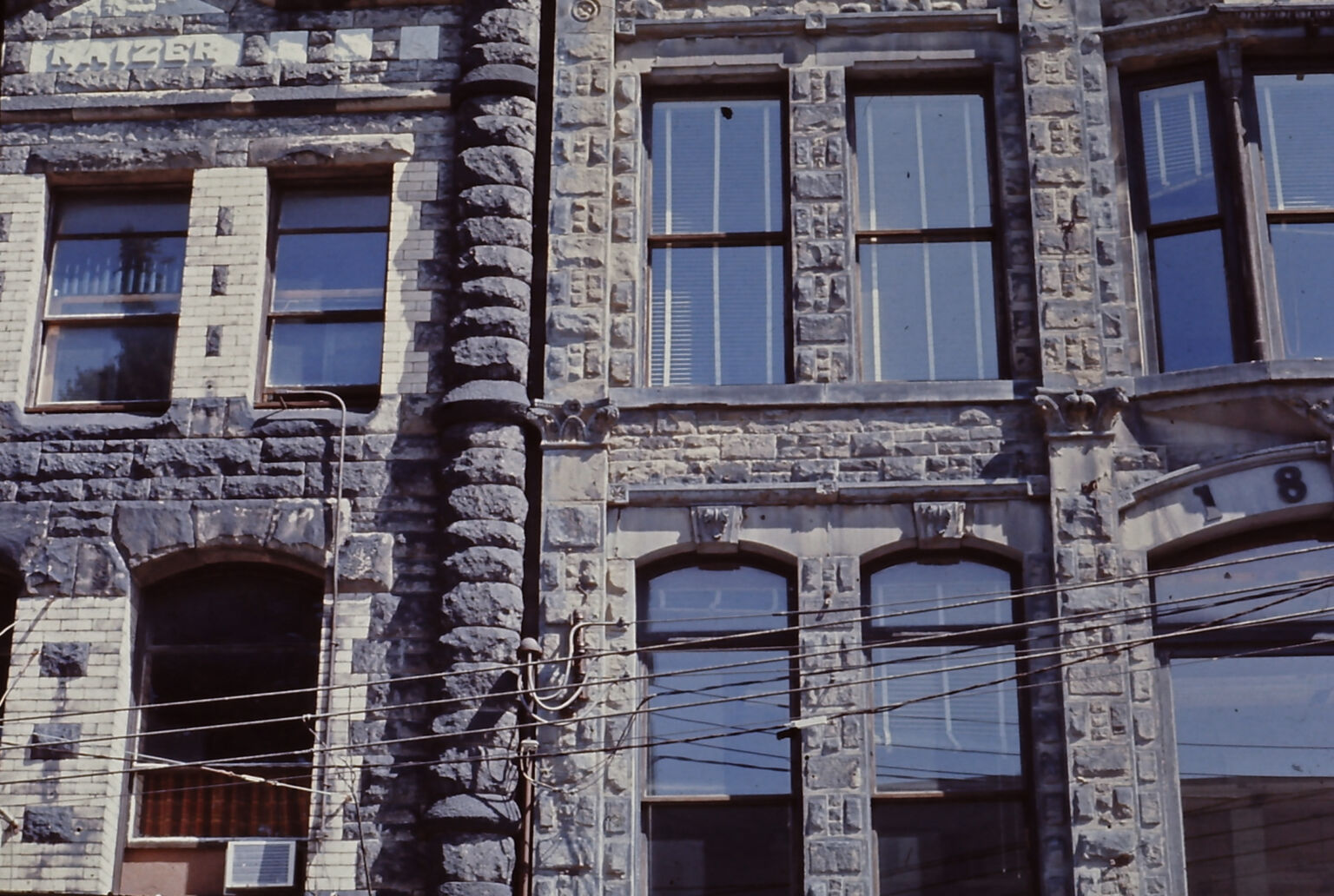
Kaizer Building 1895, G.M. Smith Building 1893. Photo 1977
Here you can see that at the pedestrian level shop fronts were channeling the design energy of a contemporary strip mall.

Crowe Building 1915, Cabot Building 1890, Kaizer Building 1895, G.M. Smith Building 1893. Photo 1976
The Masonic Hall dates from about 25 or 30 years later than most of the buildings we’ve been looking at. Their 1890s exuberance has been replace by this restrained Beaux Arts style.
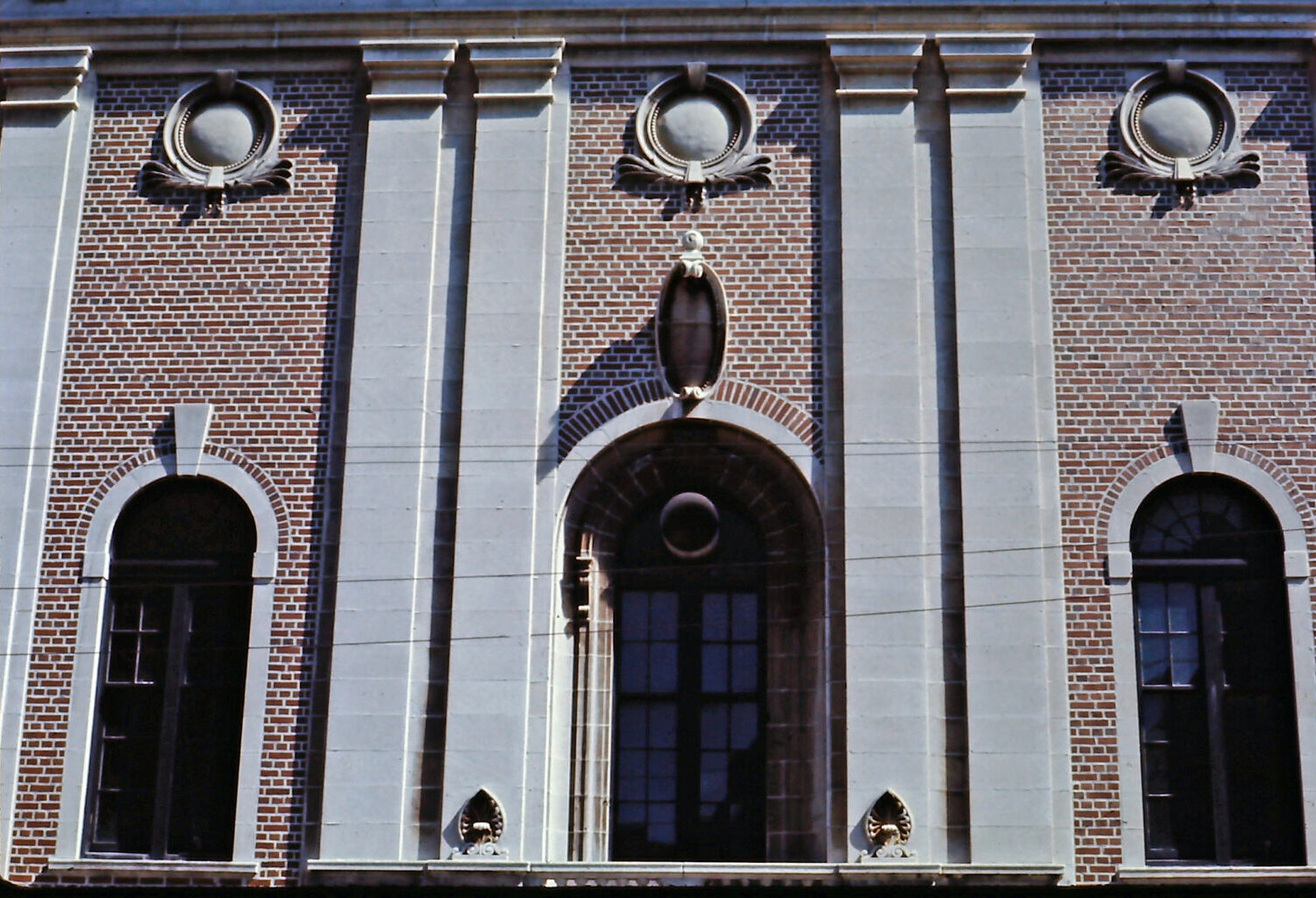
Photo 1977
In 1939 the new, Art Deco-styled Zellers would have felt like the return of confidence in the street. After the Depression years, Halifax was about to enter a moment of bustle during the World War.
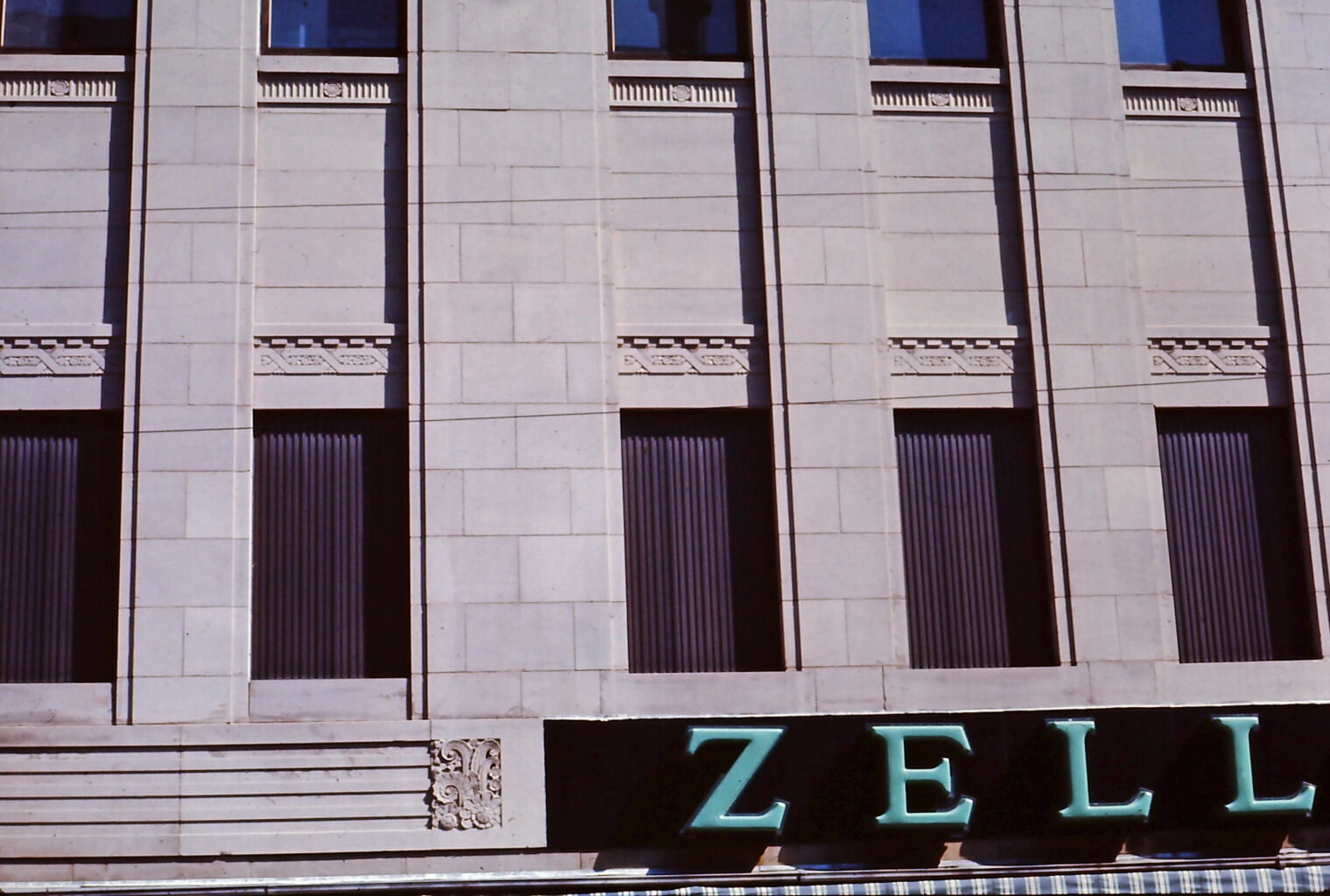
Photo 1976
Across the street from Zellers is a plainer building with an Art Deco spirit. Symbolic of the disrespect that Barrington Street was about to endure, two stories of dreary concrete block construction were added to the top in the 50s or 60s. Feels like the city saying we no longer have the energy to care.
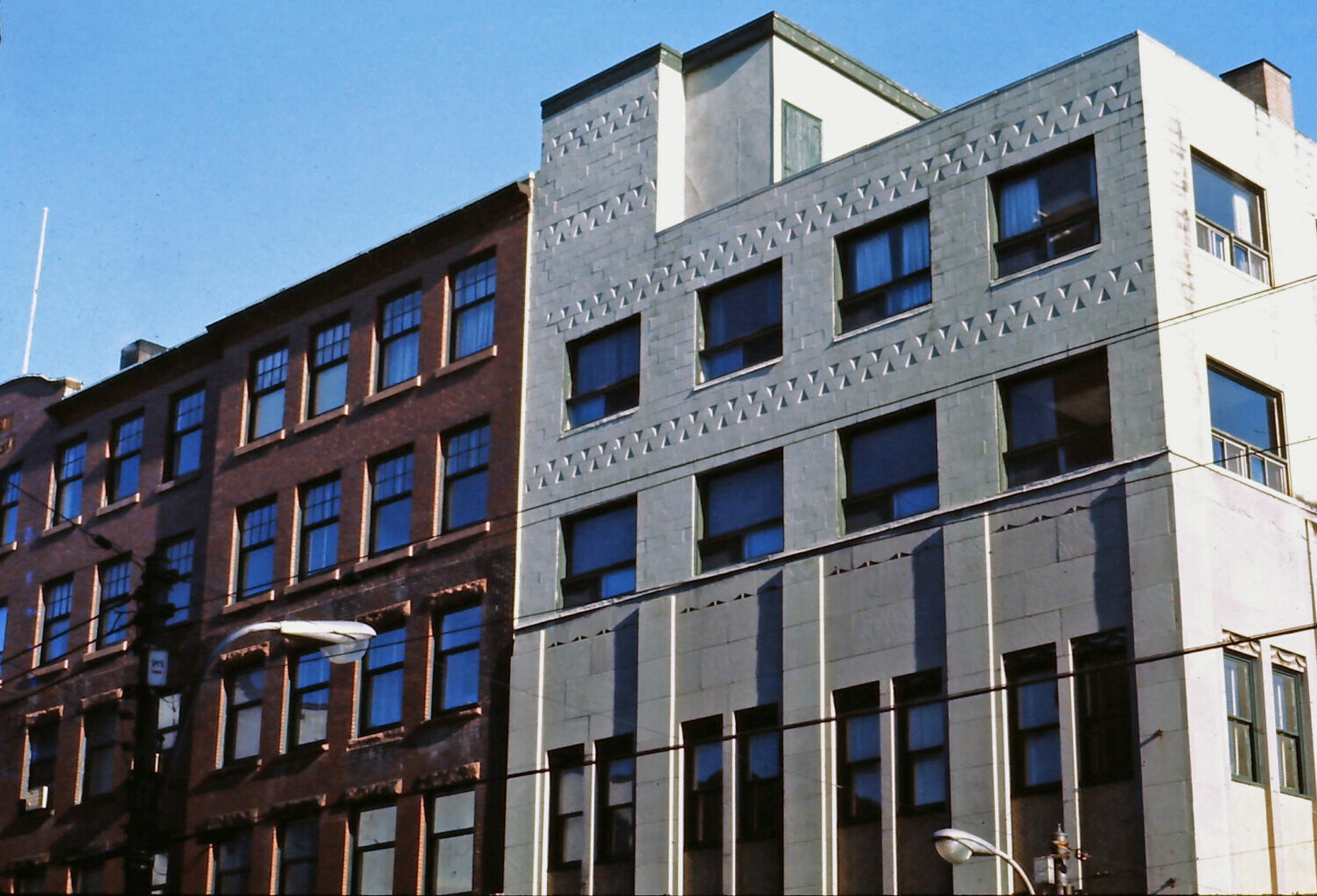
Photo 1977
A couple of years ago we were enjoying the wine bar at this same corner and I realized how far up I had to look to see the tops of the new buildings. Back in the 1970s I couldn’t imagine this was the shadow that would fall over the street.
